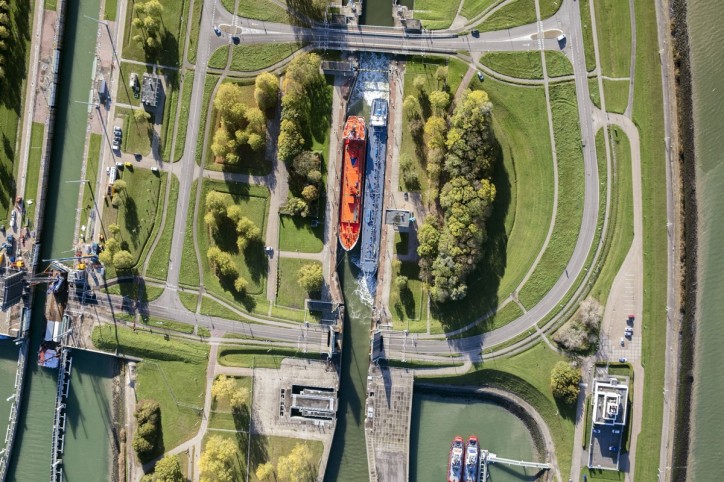Cross-border merger leads to new European top-10-player
The merger agreement between Zeeland Seaports and Ghent Port Company was signed on Friday 8 December. All eight shareholders of both ports agreed with the merger in recent weeks. The signing took place on a ship that symbolically sailed from Ghent across the Dutch border in the direction of Terneuzen. The name of the cross-border merger port will be North Sea Port. This merger port represents the 60-kilometre-long cross-border port area of Flushing, Borsele and Terneuzen in the Netherlands up to Ghent in Belgium.

Many dignitaries were present at the signing, including the Flemish Prime Minister Geert Bourgeois, the Dutch Minister of Infrastructure and Water management Cora van Nieuwenhuizen and the shareholders, directors, clients, relations and staff of both ports.
All shareholders agreed with the merger
Between September and December, the eight shareholders approved the merger agreement. In Flanders, these were the city of Ghent and the municipalities of Evergem and Zelzate and the province of East Flanders, and in the Netherlands the province of Zeeland and the municipalities of Borsele, Terneuzen and Vlissingen.
North Sea Port: Together. Smarter.
Immediately after the signing of the merger agreement, the name of the port was announced: North Sea Port. A new name was chosen, which expresses innovation and ambition, with a hint of bravado, since ‘North Sea Port’ goes beyond the former ‘Ghent’ and ‘Zeeland’. North Sea Port represents the North Sea region. The international name is intentional and offers the new port company and port area a unique position in the heart of Europe. The addition ‘Together. Smarter.’ emphasizes the importance of close cooperation with and among clients, partners and stakeholders on the one hand and the focus on innovation and a smarter way of working on the other hand.
Registered office in the Netherlands, Port House as an international sign board in Ghent
Early 2018, the European public limited liability company will be established as holding of the two subsidiary companies Zeeland Seaports and Ghent Port Company for which, among others, a supervisory body will be installed. Moreover, there will be a Shareholders Committee with all elected representatives of the municipal councils, councils and state and provincial councils – the shareholders. In addition, there will be structural and bilateral meetings with the shareholders. A participation body for the staff will also be set up for the holding. By maintaining offices at various locations and the setting up of a business consultancy body, the ‘short lines of communication’, much appreciated by the companies, are guaranteed.
The holding will be established in the former town hall of Sas van Gent, in the heart of the port area, just on the border of the Netherlands and Belgium. The future Port House in Ghent – the House of the Free Skippers at the Graslei – will function as an international sign board.
In the European top 10
North Sea Port immediately positions itself among the top of European sea ports: it is the number three in added value and the number ten in cargo transhipment. By the year 2022, North Sea Port wants to be a leading brand in the international port world. By then, it wants to increase its added value by 10%, its maritime traffic to 70 million tonnes (currently 62 million tonnes) and inland traffic to 60 million tonnes (currently 55 million tonnes). The employment is expected to grow to 100,000 jobs (direct and indirect, currently rounded off to 97,000). North Sea Port has almost 1,000 hectares allocatable land.
Advantages for companies
By means of efficiency, economy of scale, and preventing overlapping activities, North Sea Port offers opportunities to decrease operational costs. These savings may also be beneficial to companies, such as lower rates or a lower increase of rates, for example. In addition, the larger scale will offer a bigger chance of combining cargo flows.
Source: North Sea Port